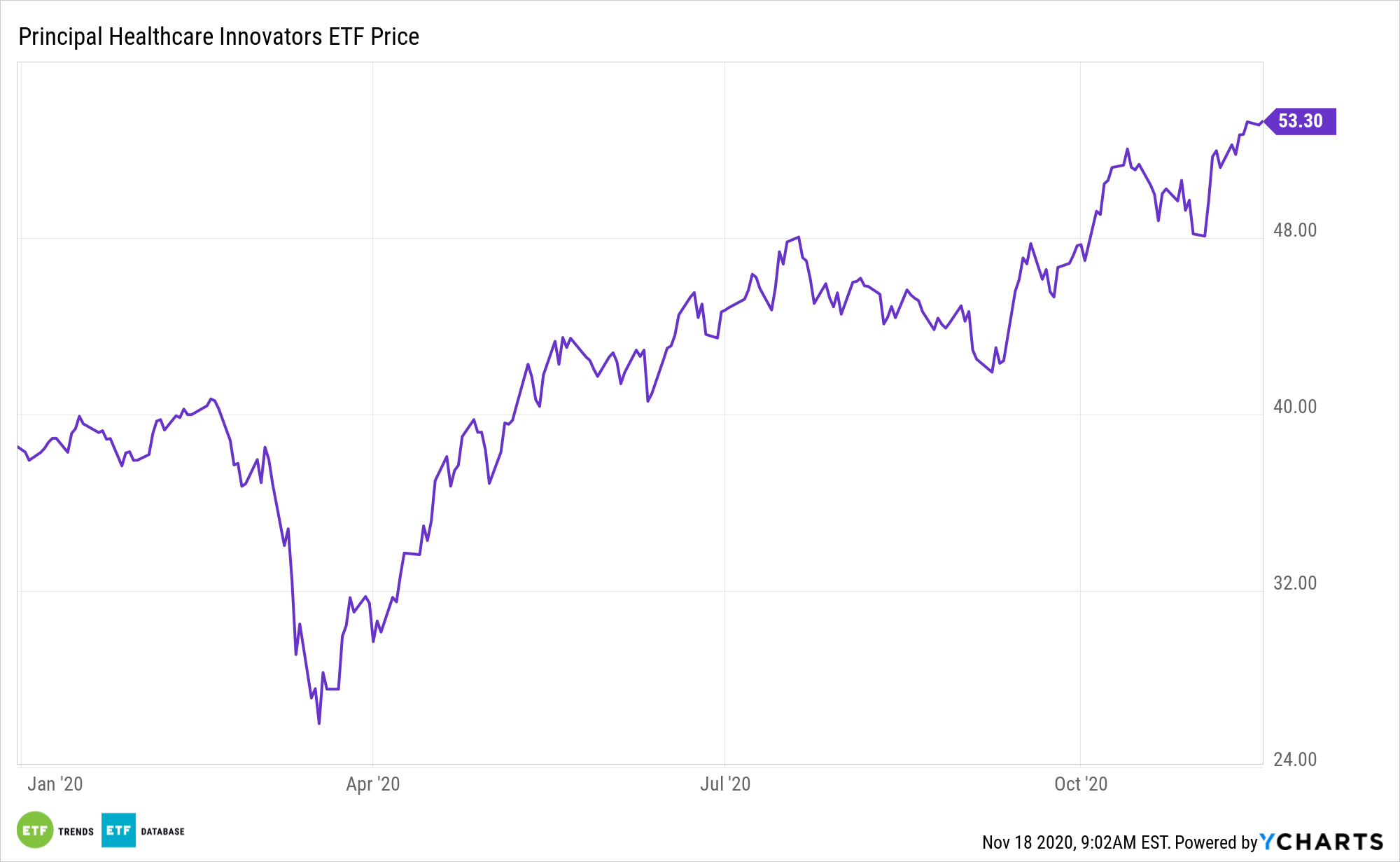The Principal Healthcare Innovators Index ETF (BTEC) is often viewed as an exchange traded fund with access to biotechnology stocks and companies working on coronavirus vaccines. That’s true, but the fund is levered to some other promising healthcare themes, including telemedicine.
BTEC seeks to provide investment results that closely correspond, before expenses, to the performance of the Nasdaq Healthcare Innovators Index.

Under normal circumstances, the fund invests at least 80% of its net assets, plus any borrowings for investment purposes, in equity securities of companies that compose the index at the time of purchase. The index uses a quantitative model designed to identify equity securities in the Nasdaq US Benchmark Index (including growth and value stock) that are small and medium capitalization U.S. healthcare companies.
“According to RBC, the digital health market is worth $27 billion today and is expected to reach $92 billion in 2025, creating tremendous opportunities for all types of players in the space,” reports Business Insider.
With COVID, Telemedicine Is Taking Shape Rapidly
Since the coronavirus outbreak, healthcare technology has come to the fore, offering various innovations to combat the virus. This can only help fuel healthcare technology exchange-traded funds (ETFs) moving forward from preventative medicine to treatment.
Amid the Covid-19 pandemic, there’s been a heavier reliance on technology, including the internet of things to facilitate communications amid social distancing and lockdown measures. However, it’s also positively impacting the way medical services are delivered with more advanced technology.
Indeed, BTEC has plenty of digital healthcare tailwinds.
According to Business Insider: “RBC analysts noted three of the most likely “surprises” that could potentially rattle the convergence, including: (1) the potential of a large healthcare acquisition by big tech similar to Amazon’s purchase of Whole Foods to break into the grocery space, (2) a new “workplace” healthcare system developed by big tech for its employees with an attempt to scale it externally, and (3) the combined use of a digital app and an existing drug to extend its patent life, such as connecting an inhaler with an app that records patient data.”
For more alternative investing ideas, visit our Alternatives Channel.
The opinions and forecasts expressed herein are solely those of Tom Lydon, and may not actually come to pass. Information on this site should not be used or construed as an offer to sell, a solicitation of an offer to buy, or a recommendation for any product.








